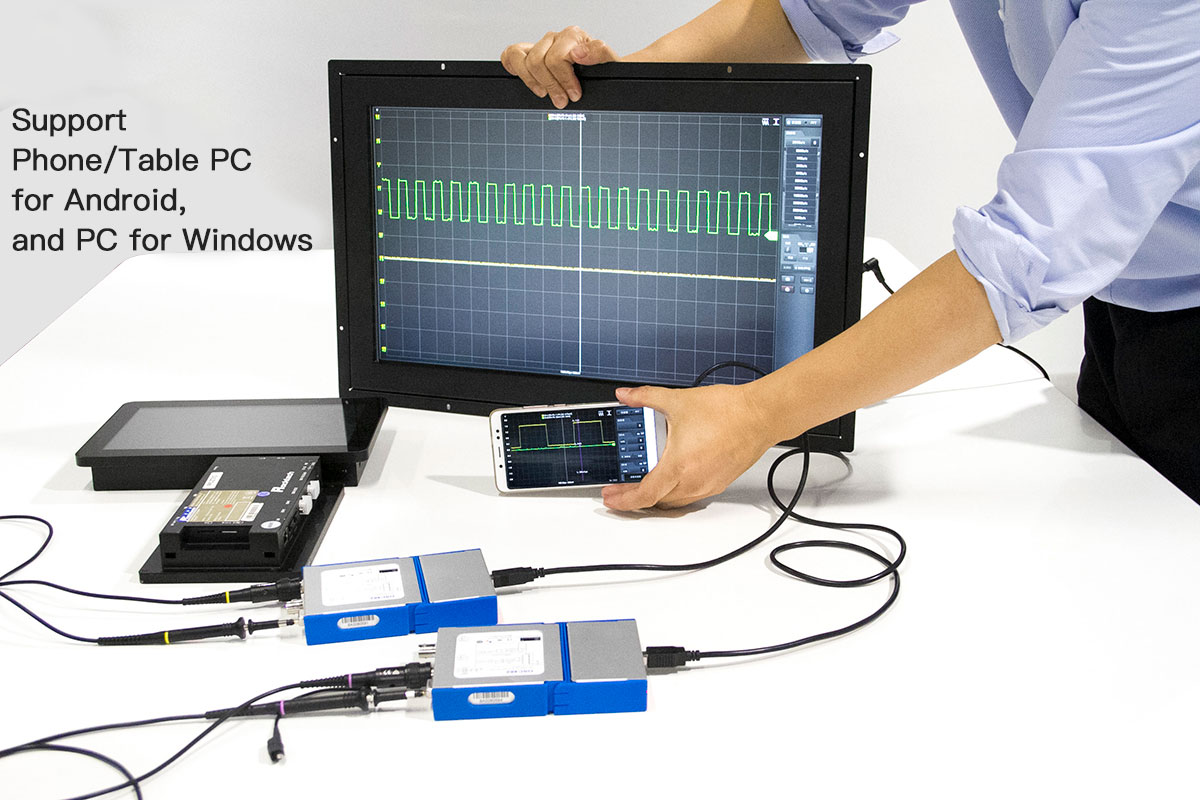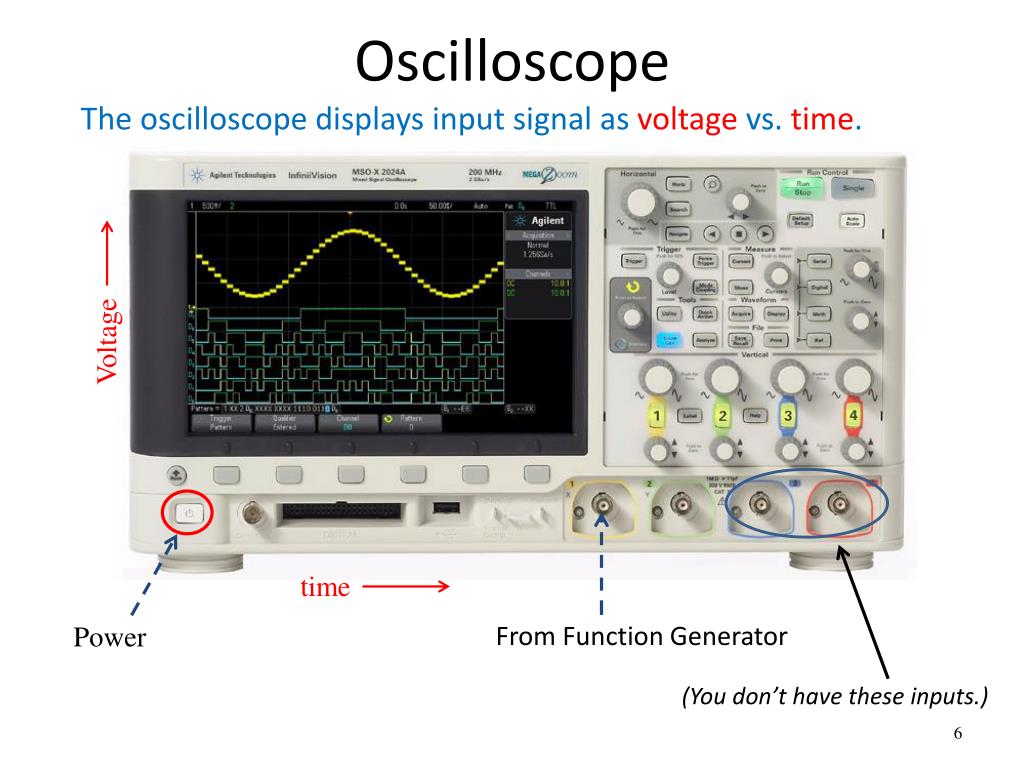

- #Quickmenu oscilloscope img generator#
- #Quickmenu oscilloscope img code#
- #Quickmenu oscilloscope img professional#

For an output frequency of about 20 Hz, the distorted SYNC signal is a pseudo triangle wave with a peak-to-peak amplitude of 1.2 V. The capacitors at the generator's SYNC output distort the square-wave signal.
#Quickmenu oscilloscope img generator#
Connecting two channels of a waveform waveform generator lets you create a Lissajous pattern. This creates a rough synchronized triangle wave to use as a vertical sweep.įigure 1.

Then, the signal is AC-Coupled by another 470 ♟ capacitor and then through a coax cable to the oscilloscope's CH2 (or the “Y”) input. The generator's SYNC output is first bypassed to GND with a 470 ♟ capacitor to reduce its rise and fall times. Figure 1 shows how output of the waveform generator connects to the oscilloscope's CH1 (or the “X”) input. In this article I used an Analog Arts SL987, an oscilloscope with a built-in arbitrary waveform generator you can use an oscilloscope and waveform generator of your choosing. To produce these patterns, you need two signal sources and a two-channel oscilloscope with the XY capability. A Lissajous pattern, which is essentially the display of voltage and frequency relationships between two signals has been depicted in old science fiction movies to represent “super” technology. Technical journals including EDN publish creative techniques to produce interesting Lissajous patterns from time to time. Practically every engineer who has worked with an oscilloscope has, at some point, seen these patterns. Many online pages explain them in detail and show several popular patterns. It's become almost a passion which during stressful times, reminds me of the magic of waves.ĭespite jaw-dropping computer graphic technologies, creating Lissajous patterns and other images on a oscilloscope is still exciting. I enjoy creating and viewing signals in different forms, signals of all shapes and sizes. When I need a break I sometimes sit at my desk and play with waves.
#Quickmenu oscilloscope img professional#
Plt.colorbar(sm, ticks=np.As a professional engineer, I'm often overworked and stressed. Sm = plt.cm.ScalarMappable(cmap=cmap, norm=norm) # Set probabilities values to specific indexes in the heatmapįig, axes = plt.subplots(1, 2, figsize=(8, 4))įig.colorbar(ax.imshow(img), ax=ax)Īx.imshow(heatmap, alpha=.5, cmap='jet') Heatmap = np.zeros((x_dim, y_dim), dtype=float) # Get the dimensions of the original image Some tweaking might be needed, especially for the plotting part. This snippet is not very pretty but it works for the dummy dataset you've provided and is intended to be pretty self-explanatory with the above introduction. You can store data from a CSV file in a pandas DataFrame this way: df = pd.read_csv("data.csv")Īnd iterate over rows, using the first row as keys for each column value, as following: for index, row in df.iterrows(): Seeing what your use case is, I recommend using pandas in order to process your CSV data files. The answer below has been written with this clean CSV dataset in mind. The simplest example being the following: x, y, x1, y1, Probability value

Please help.įirst, if you are not comfortable with deep-nested data, you should clean your data in your CSV file (they are not uniform and have duplicates - they are also error-prone if you want rectangles).
#Quickmenu oscilloscope img code#
But by using your code I'm getting output like above. Now based on that value I'm planning to generate the heatmap. I have extracted all the patches of size 256 x 256 from whole slide images and computed "probability values" of each patch. "p" is the probability value of having cancer or not in that particular area. Sample imageover which Heatmap should be generated ]Įxpected Heatmap type ] Any help will be highly appreciated.Ĭontent of CSV file: (x,y) (x, y+y1) (x+x1, y) (x+x1, y+y1) Probability value The details of the probability values (.csv) file format are given below. How can I write a code for heatmap generation using the coordinate points and probability values over an image. I have probability values of some areas and coordinate points. I have a pathology image of size 1024 x 1360.


 0 kommentar(er)
0 kommentar(er)
